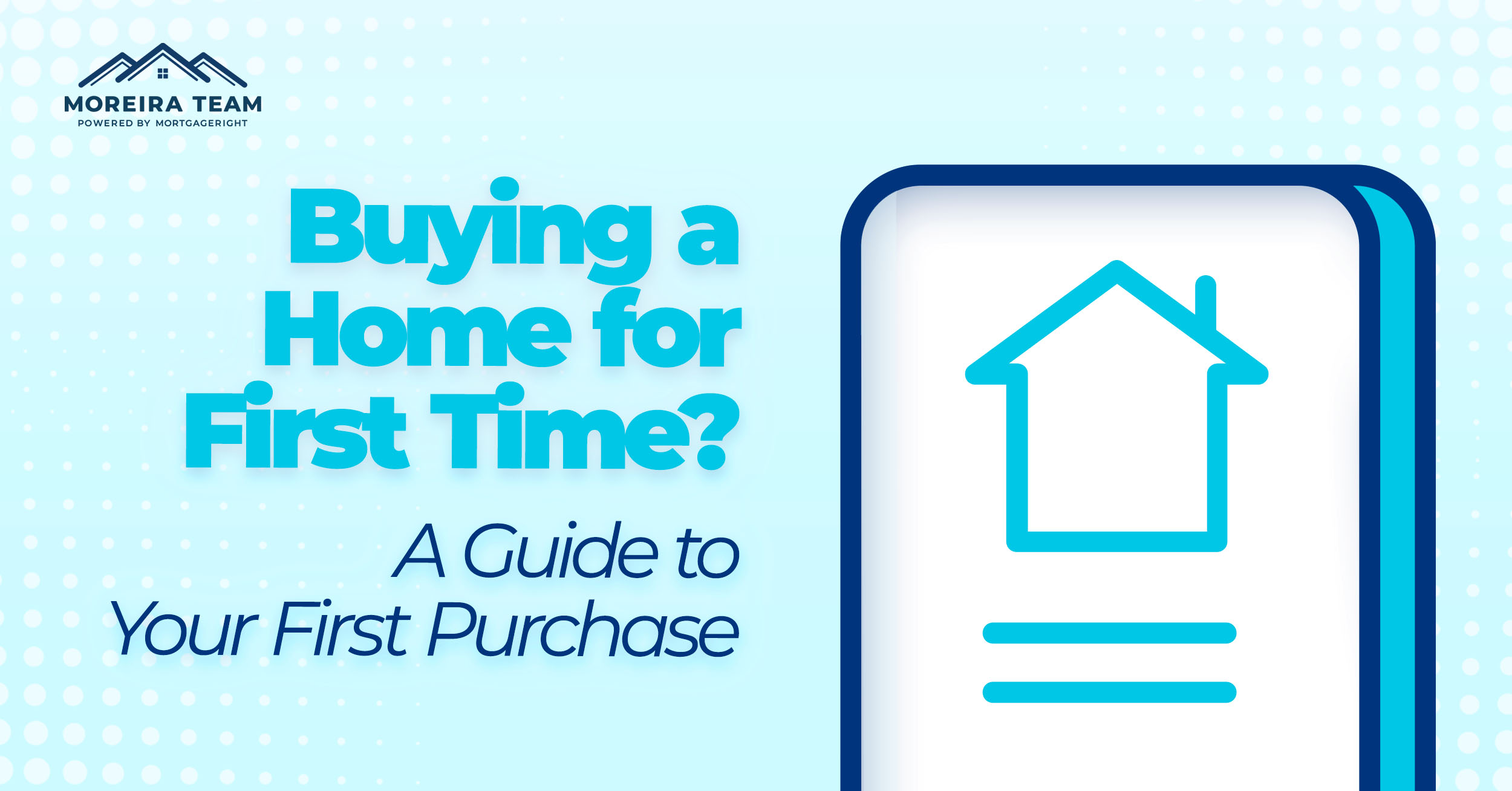
In this article
- 1. Introduction: What is First-Time Home Buying and Why It Matters
- 2. Understanding First-Time Home Buying: Key Concepts and Definitions
- 2.1 Core Financial Terms
- 2.2 Loan Program Relationships
- 3. Why First-Time Home Buying Builds Long-Term Wealth
- 4. First-Time Buyer Loan Comparison
- 5. Step-by-Step Guide to Buying Your First House
- Step 1: Assess Financial Readiness and Determine How Much House You Can Afford
- Step 2: Get Pre-Approved and Build Your Home Buying Team
- Step 3: Start Your Home Search and Make Strategic Offers
- Step 4: Navigate Inspections, Appraisals, and Final Approval
- Step 5: Complete the Closing Process
- 6. Protecting Your Investment as a First-Time Homeowner
- 7. Common First-Time Home Buyer Mistakes to Avoid
- 8. Real-Life First-Time Buyer Success Story
- 9. Additional Considerations for First-Time Buyers
- 10. FAQs About Buying Your First Home
- Conclusion: Key Takeaways for First-Time Home Buyers
1. Introduction: What is First-Time Home Buying and Why It Matters
First-time home buying is a structured financial and legal process that transforms renters into property owners through mortgage qualification, property selection, and closing procedures. This guide covers everything from calculating affordability and comparing lenders to navigating inspections and closing day successfully.
The process of buying a house typically takes 30-60 days from accepted offer to closing, with additional preparation time for financial readiness and house hunting. You’ll learn essential terminology, step-by-step procedures for buying a house, cost breakdowns, and strategies to avoid common pitfalls that derail first-time purchases.
Most first time homebuyers qualify for government programs offering reduced down payment requirements, closing cost assistance, and favorable loan terms through Federal Housing Administration (FHA), Veterans Affairs (VA), or conventional loan programs designed specifically for new buyers.

2. Understanding First-Time Home Buying: Key Concepts and Definitions
2.1 Core Financial Terms
Down payment represents your upfront equity investment, typically calculated as 3-20% of the home’s purchase price. Closing costs include lender fees, title insurance, and third-party services, usually 2-5% of the home’s purchase price.
Monthly mortgage payment combines principal, interest, property taxes, and homeowners insurance (PITI). Private mortgage insurance (PMI) adds to monthly payments when down payment is less than 20% on conventional loans.
Pre approved status means mortgage lenders have verified your income, assets, and credit report, providing a preapproval letter that strengthens your negotiating power with sellers.
2.2 Loan Program Relationships
Your credit report score directly influences interest rates and loan approval odds. Higher scores unlock better loan interest rate options, reducing monthly mortgage payments significantly over the loan term.
Down payment amount affects both upfront costs and monthly payments – larger down payments eliminate PMI requirements but reduce available emergency fund reserves for unexpected expenses after closing. If you put down less than 20% on a conventional loan, you will need to pay PMI as part of your monthly payments.
3. Why First-Time Home Buying Builds Long-Term Wealth
Homeownership historically outpaces inflation with median home appreciation of 3-5% annually over 20-year periods. Federal Reserve data shows homeowner median net worth of $255,000 versus $6,300 for renters.
Changes in home prices over time not only contribute to wealth building through appreciation, but also directly impact affordability for first-time buyers, making it important to understand local price trends when budgeting for a home.
Monthly mortgage payments build equity rather than paying rent with no ownership benefit. Tax credits and deductions for mortgage interest and property taxes provide additional financial advantages for primary residences.
Government programs specifically support first time homebuyers with down payment assistance, favorable interest rates, and reduced upfront costs that accelerate the path to homeownership.
4. First-Time Buyer Loan Comparison
| Loan Type | Minimum Credit Score | Down Payment | Income Limits | Key Benefits |
|---|---|---|---|---|
| FHA Loans | 580 | 3.5% | Vary based on area | Lower credit requirements |
| VA Loans | 580 | 0% | None | No down payment for veterans |
| Conventional | 620 | 3% | Higher limits | No upfront mortgage insurance |
| USDA Rural | 620 | 0% | 115% of area median | Rural/suburban properties |
5. Step-by-Step Guide to Buying Your First House
Step 1: Assess Financial Readiness and Determine How Much House You Can Afford
Calculate your debt-to-income ratio by dividing total monthly debt payments by gross monthly income. Most mortgage lenders prefer ratios below 36%, though government programs may accept higher ratios with compensating factors. Knowing how much you can afford is crucial at this stage, as it helps you set a realistic budget and focus on properties within your financial reach.
Review your credit report from all three bureaus and dispute any errors that could impact loan approval. Scores above 740 typically qualify for the best interest rates, while scores between 620-739 still access conventional loans with slightly higher rates.
Build your emergency fund to cover 3-6 months of expenses beyond your down payment and closing costs. This financial cushion protects against unexpected expenses like major repairs or temporary income loss.
Use the 28% rule as a starting point: limit housing costs to 28% of gross monthly income, including principal, interest, property taxes, homeowners insurance, and any homeowners association fees.
Step 2: Get Pre-Approved and Build Your Home Buying Team
Shop with at least three mortgage lenders within a 30-day window to compare interest rates, loan terms, and upfront costs. Rate shopping within this timeframe counts as a single credit inquiry rather than multiple hits to your credit score.
Gather required financial information: two years of tax returns, recent pay stubs, bank statements, and documentation of any additional income sources. Stable income history strengthens your loan application significantly.
Getting pre-approved gives you a competitive edge when making offers, as sellers see you as a serious and qualified buyer.
Interview several potential agents to evaluate their experience, specialization, and ability to assist you effectively. Select a buyer’s agent who specializes in first time homebuyers and knows your target market well. A buyer’s agent represents your interests in negotiations and provides market insights throughout the buying process.
Research first-time buyer assistance programs in your state and locality. Many offer down payment grants, closing cost assistance, or favorable loan terms that reduce the total cost of homeownership.
Step 3: Start Your Home Search and Make Strategic Offers
Define your must-haves versus nice to haves for location, size, features, and condition. Focus on factors you cannot change later, like neighborhood, school districts, and commute times.
When searching for your dream home, balance your aspirations with practical considerations such as budget, location, and long-term needs.
Tour multiple properties to calibrate your expectations and understand local market pricing. Take notes and photos to compare properties objectively rather than relying on memory.
Analyze recent comparable sales (comps) with your real estate professional to determine fair offer prices. In competitive markets, consider offering above asking price with appropriate contingencies to protect your interests.
If your bid for a dream house is not accepted, keep an open mind and be willing to adjust your expectations to find a suitable home.
Include standard contingencies for home inspection, appraisal, and mortgage financing in your purchase offer. These protect you from overpaying or buying a property with hidden defects.
Step 4: Navigate Inspections, Appraisals, and Final Approval
Schedule a professional home inspection within your contingency period, typically 7-10 days after offer acceptance. Professional inspectors evaluate major systems, structural integrity, and safety issues that could require expensive repairs.
Attend the home inspection and ask questions about the property’s condition, maintenance needs, and expected lifespans of major components like HVAC, roofing, and plumbing systems.
Review the home appraisal ordered by your lender to ensure the property value supports your loan amount. If the appraisal comes in below your offer price, you may need to renegotiate or pay the difference in cash. As part of the final mortgage approval process, your lender will also review property details to verify all information about the home before closing.
Maintain financial stability during the underwriting process – avoid new credit applications, large purchases, or job changes that could jeopardize your final approval.
Step 5: Complete the Closing Process
Review your Closing Disclosure document at least three days before closing date. This details your final loan terms, monthly payment amounts, and all closing costs you’ll pay upfront.
Conduct a final walk-through 24-48 hours before closing to verify the property condition matches your expectations and any agreed-upon repairs were completed satisfactorily.
Bring certified funds for your down payment and closing costs to the closing appointment. Personal checks typically aren’t accepted for large amounts, so coordinate with your bank in advance.
Sign loan documents and receive your keys on closing day. Your real estate agent and closing attorney will guide you through the paperwork and answer any final questions. Your agent will also work with the seller’s agent to finalize the transaction and ensure all terms of the agreement are met.
6. Protecting Your Investment as a First-Time Homeowner
Becoming a homeowner is a major milestone, but it also comes with new responsibilities to safeguard your investment. One of the most important steps is understanding the full scope of costs involved in the home buying process. Your monthly mortgage payment will likely be your largest recurring expense, and it typically includes not just the loan principal and interest, but also property taxes and homeowners insurance. These amounts can vary based on your home’s purchase price, location, and the type of mortgage you choose.
In addition to your monthly mortgage payment, you’ll need to plan for closing costs, which usually range from 2% to 5% of the purchase price. These costs cover everything from lender fees to title insurance and are due at the time of closing. Homeowners insurance is another essential expense, protecting your property against damage or loss, and its cost can vary based on factors like your home’s value, age, and location.
To help manage these upfront and ongoing costs, explore government programs such as those offered by the Federal Housing Administration (FHA). These programs can provide valuable assistance with down payments and closing costs, making homeownership more accessible for first time buyers. Working with a knowledgeable real estate agent is also key—they can guide you through the home buying process, help you identify potential savings, and ensure you’re making informed decisions.
By thoroughly researching your options, understanding all the costs involved, and leveraging available resources, you can protect your investment and set yourself up for long-term success as a homeowner.
7. Common First-Time Home Buyer Mistakes to Avoid
Mistake 1: Starting house hunting before getting pre-approved, which wastes time viewing homes outside your budget and weakens your negotiating position in competitive markets.
Mistake 2: Spending your entire savings on down payment and closing costs, leaving no emergency fund for moving expenses, immediate repairs, or unexpected financial setbacks.
Mistake 3: Skipping the home inspection to save a few hundred dollars, potentially missing major defects that cost thousands in repairs after closing.
Mistake 4: Making large purchases or opening new credit accounts during the mortgage process, which can change your debt-to-income ratio and derail loan approval.
Pro Tip: Start proper preparation 12-18 months before buying by improving your credit score, building savings, and researching your target neighborhoods and price ranges.
8. Real-Life First-Time Buyer Success Story
Case Study: Jennifer and Mark purchased their first home in Austin, Texas, transforming from renters paying $2,200 monthly to homeowners building equity.
Starting Situation: Combined income of $95,000, credit scores between 700-720, $25,000 in savings, and tired of rising rent costs in their growing city.
Steps Taken:
- Used FHA loan with 3.5% down payment ($10,500) on $300,000 home
- Received $3,000 state first-time buyer assistance for closing costs
- Chose emerging neighborhood with good schools and transit access
- Negotiated seller credits for minor repairs identified during inspection
Final Results: Monthly mortgage payment of $1,850 including PMI, saving $350 monthly compared to rent. After two years, home appreciation added $35,000 in equity while rent in their former building increased to $2,600.
| Metric | Before (Renting) | After (Owning) | 2-Year Difference |
|---|---|---|---|
| Monthly Housing Cost | $2,200 | $1,850 | -$350/month |
| Equity Building | $0 | $35,000 | +$35,000 |
| Tax Benefits | $0 | $2,400/year | +$4,800 total |
9. Additional Considerations for First-Time Buyers
As you navigate the home buying process, it’s important to look beyond the basics and consider several additional factors that can impact your experience as a first-time buyer. Start by ensuring you have a stable income and a strong credit report, as these are crucial for qualifying for a mortgage loan with a competitive interest rate. Lenders will review your financial history closely, so take time to check your credit report for errors and address any issues before applying.
Comparing mortgage lenders is another essential step. Interest rates, loan terms, and upfront costs can vary based on the lender, so shop around to find the right mortgage for your needs. Pay attention to details like private mortgage insurance (PMI), which may be required if your down payment is less than 20%, and consider whether paying mortgage points upfront could lower your long-term interest rate.
When budgeting for your home purchase, remember to account for all upfront costs, including the down payment, closing costs, and inspection fees. Explore different loan options—such as conventional loans, VA loans, and FHA loans—to find the best fit for your financial situation. Each loan type offers unique benefits and requirements, so review your options carefully.
Don’t forget about the ongoing expenses of homeownership. Property taxes, homeowners insurance, and regular maintenance costs can add up and will vary based on your home’s location and condition. Proper preparation and thorough research will help you anticipate these expenses and avoid surprises down the road.
By considering these additional factors and planning ahead, you’ll be better equipped to choose the right mortgage, manage your budget, and enjoy a smooth transition to homeownership.
10. FAQs About Buying Your First Home
Q1: How much money do I need to buy my first home?
Most first time homebuyers need 3-20% down payment plus 2-5% for closing costs, though government programs and assistance can reduce these requirements significantly.
Q2: How long does the homebuying process take from start to finish?
Typically 30-60 days from accepted offer to closing day, plus additional time for financial preparation, pre-approval, and home shopping that varies by individual circumstances.
Q3: What credit score do I need as a first-time buyer?
FHA loans accept scores as low as 580 with 3.5% down, while conventional loans typically require 620+. Higher scores qualify for better interest rates and loan terms.
Q4: Should I buy if I might move in 3-5 years?
Consider transaction costs and local market conditions carefully. Generally, you need 5+ years to break even versus renting due to closing costs and selling expenses.
Q5: How do I choose the right mortgage lender?
Compare interest rates, loan terms, upfront costs, and customer service from multiple lenders. Consider both banks and credit unions, as rates and terms can vary significantly.
Conclusion: Key Takeaways for First-Time Home Buyers
Start building your financial foundation 12-18 months before you want to buy by improving credit scores, building savings, and researching assistance programs available in your area.
Get pre-approved with multiple lenders to understand your buying power and secure competitive interest rates before starting your home search in earnest.
Work with experienced professionals – the right real estate agent, mortgage lender, and home inspector – who understand first-time buyer needs and local market conditions.
Don’t rush critical decisions like skipping inspections or waiving contingencies to win bidding wars. Protect yourself with proper due diligence and maintain enough money for emergencies.
Next Action Step: Use online affordability calculators to estimate your buying power, then contact local lenders to begin the pre-approval process and start building your home buying team.




